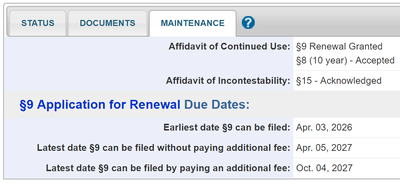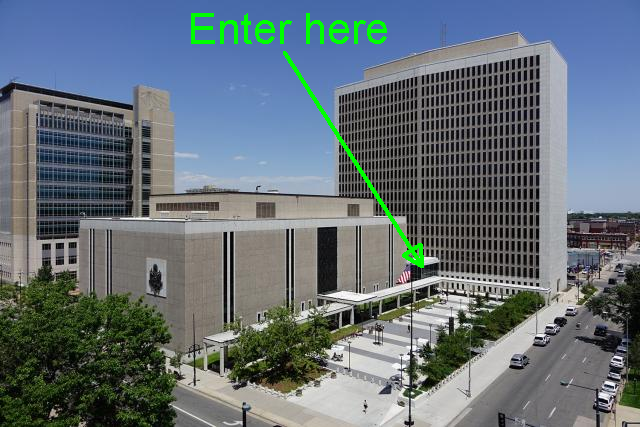 (Updated to include screen shot from USPTO’s dashboard, thanks to Ken Boone.)
(Updated to include screen shot from USPTO’s dashboard, thanks to Ken Boone.)
The post-registration branch at the USPTO — the group of people whose job it is to look at a six-year renewal or a ten-year renewal — sure is slow sometimes.
We have one where we filed our renewal on March 22, 2017. The post-reg people accepted it on May 9, 2017 (which is what prompted today’s blog post). Actually that was only six or seven weeks which was faster than many cases. We had one recently that took almost five months to get looked at. We filed the renewal on October 18, 2016 and it did not get looked at until April 4, 2017.
The problem of course is that if post-reg takes five months to look at a renewal, and if post-reg finds some real or imagined flaw in the renewal papers, then there is precious little time to try to straighten things out. In this case with the delay of almost five months, the post-reg person bounced the renewal because of a flaw that was merely imagined, not real. We argued with the post-reg person, but we had our backs against the wall because the renewal window was going to expire in just a few days. Fortunately the post-reg person withdrew the bounce. But still this forced the client to endure uncertainty for almost five months, for no good reason.
It sure will be good when the USPTO gets the post-reg branch back to normal.

 Those who, like me, often record assignments at the USPTO are accustomed to the steps that are required to e-file in
Those who, like me, often record assignments at the USPTO are accustomed to the steps that are required to e-file in  The very handy “maintenance” tab in
The very handy “maintenance” tab in  The place and time for Meet the Bloggers XIII is now set. Perhaps the best non-INTA event ever devised by woman or man, MTB XIII will be held on Monday, May 22nd, 7:30 – 9:30 PM, at
The place and time for Meet the Bloggers XIII is now set. Perhaps the best non-INTA event ever devised by woman or man, MTB XIII will be held on Monday, May 22nd, 7:30 – 9:30 PM, at  oundtable with leaders from the trademark office at the USPTO. The free-of-charge roundtable will take place April 21 at the Denver patent office. A free breakfast will be provided by Oppedahl Patent Law Firm LLC. For more information, and to register,
oundtable with leaders from the trademark office at the USPTO. The free-of-charge roundtable will take place April 21 at the Denver patent office. A free breakfast will be provided by Oppedahl Patent Law Firm LLC. For more information, and to register,  Today’s blog article is a “tech” article and it is a “trademarks” article. The main point of this blog article is that probably you should activate “wifi calling” on your mobile phone, if you have not already done so.
Today’s blog article is a “tech” article and it is a “trademarks” article. The main point of this blog article is that probably you should activate “wifi calling” on your mobile phone, if you have not already done so.